Piano Music Theory Tutorials for Beginners Made Simple
Category: Music Theory
Master Piano Music Theory Easily with Beginner Tutorials
Starting your journey into piano music theory can feel overwhelming. If you’ve just picked up the piano or are eager to understand how music works beneath your fingers, this guide is crafted just for you. Many beginners struggle with confusing jargon and abstract concepts, making it tough to connect theory directly to playing the piano. You’ve searched for clear, step-by-step tutorials that demystify music theory and give practical insights tailored to piano—without overwhelming you.
In this blog, we break down essential piano music theory into bite-sized pieces, focusing on foundational knowledge like notes, scales, chords, and rhythm, all linked to hands-on piano techniques. Our approach is different because we blend theory with immediate application, helping you hear and play what you learn. Whether you're self-teaching or supplementing lessons, this guide will ensure your theory knowledge boosts your piano skills and enjoyment. Keep reading to unlock the clear, straightforward piano music theory pathways that you can start practicing today.
- Master Piano Music Theory Easily with Beginner Tutorials
- Understanding the Basics: What is Music Theory on Piano?
- Learning the Piano Keyboard Layout
- Notes and Intervals: The Building Blocks of Melody
- Introduction to Scales: Major and Minor Scales on Piano
- Chords and Triads: Foundations of Harmony
- Rhythm and Timing Essentials for Beginners
- Reading Sheet Music for Piano Beginners
- Connecting Theory with Practice: Simple Piano Exercises
- Common Mistakes and Tips for Learning Piano Music Theory Faster
- Resources and Tools to Continue Your Music Theory Journey
Understanding the Basics: What is Music Theory on Piano?
Before diving into playing complex pieces, it’s crucial to understand what music theory is and why it matters for piano beginners. Simply put, music theory is the language that explains how music works. It breaks down the elements of sound—like notes, rhythms, scales, and chords—into clear concepts you can learn and apply. For piano players, this means understanding how notes are structured on the keyboard, how they combine to form chords, and how rhythms create the flow of a song.
Mastering basic music theory empowers you to:
- Identify the notes on the piano and understand their relationships.
- Build and recognize scales and chords, which are the building blocks of melodies and harmony.
- Read sheet music confidently, translating written notes into piano keys.
- Develop a strong sense of rhythm and timing that’s essential for playing in sync with others or backing tracks.
Without these fundamentals, playing piano can feel like guesswork. But with music theory as your guide, you can unlock the full potential of the keyboard, improvise with ease, and learn new songs faster. This foundational knowledge also creates a visual and auditory map in your mind, making practice sessions more effective and enjoyable. For beginners, taking the time to grasp these basic concepts will pay off in smoother learning progress and greater musical creativity.
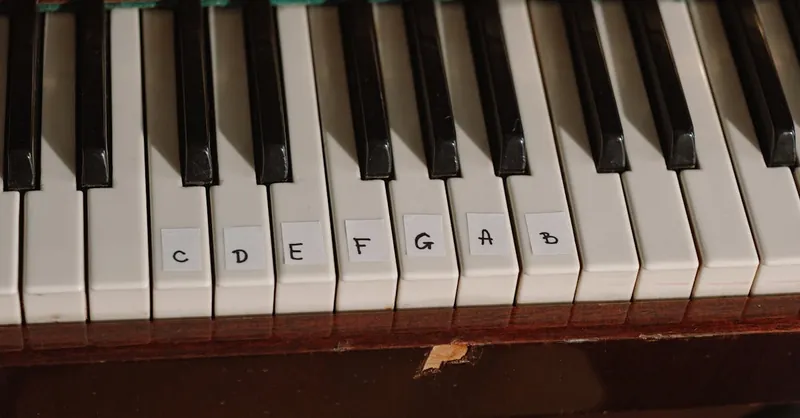
Image courtesy of cottonbro studio
Learning the Piano Keyboard Layout
A crucial first step in mastering piano music theory is understanding the piano keyboard layout. The piano keyboard is made up of a repeating pattern of white and black keys, which represent the 12 unique musical notes used in Western music. Getting familiar with this structure lays the foundation for identifying notes, recognizing scales, and building chords with confidence.
The Structure of the Piano Keyboard
The keyboard is divided into octaves, each containing 12 keys: 7 white keys and 5 black keys. The white keys correspond to the natural musical notes A, B, C, D, E, F, and G, arranged in a repeating cycle. The black keys represent the sharp (#) and flat (b) notes that sit between most white keys, grouped in sets of twos and threes. This grouping helps you quickly locate notes and orient your hands.
Naming Notes on the Keyboard
- Identify the note “C”: Find any set of two black keys. The white key immediately to the left of the first black key in that group is always C. From here, the white keys follow alphabetically: D, E, F, G, A, B, then back to C.
- Use the black keys for sharps and flats: A black key to the right of a white key is its sharp (e.g., C# is the black key right after C), while the same key can also be a flat for the white key higher up (e.g., D♭).
- Practice naming the notes upfront: Regularly naming notes on the keyboard by sight will improve your speed and help when reading sheet music or playing by ear.
Octave Identification
An octave is the interval between one note and another with the same name, higher or lower in pitch. On the keyboard, the pattern of white and black keys repeats every 12 keys, which is one octave.
- Each octave contains one complete set of all 12 notes, from C through B.
- Keyboards are usually labeled with numbers to indicate octaves, such as C4, which is middle C—the central point many beginners use as a reference.
- Knowing octaves lets you accurately describe which specific note to play, which is especially important when reading sheet music or playing layered piano parts.
By mastering the layout of the piano keyboard—knowing how to identify white and black keys, note names, and octaves—you create a solid base for grasping more advanced music theory. This clear picture of the keyboard’s structure allows you to visualize scales, form chords, and connect theoretical concepts with real piano playing effectively.
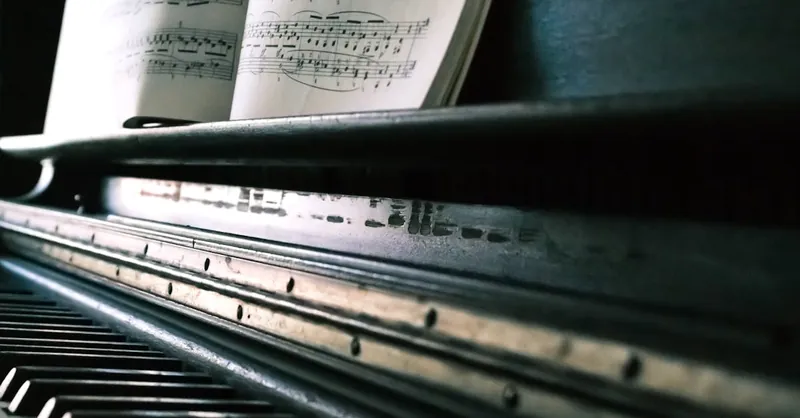
Image courtesy of Steve Johnson
Notes and Intervals: The Building Blocks of Melody
To truly understand piano music theory and start crafting beautiful melodies, it’s essential to grasp the concept of notes and intervals. Notes are the individual sounds you play on the piano, and intervals describe the distance between two notes. Together, they form the core language of melody and harmony.
Different Types of Notes on the Piano
On the keyboard, each key corresponds to a specific note with a distinct pitch. Notes come in two main varieties:
- Natural notes: These are the white keys labeled A through G. They form the foundation of most scales and melodies.
- Accidentals (sharps and flats): The black keys represent notes raised or lowered by a half step (semitone). For example, C# (C sharp) is one semitone higher than C, while D♭ (D flat) is one semitone lower than D, but both share the same black key.
Understanding these note types lets you navigate the keyboard confidently, enabling you to play any melody or chord.
What Are Intervals and Why They Matter in Piano Playing
An interval is the gap between two notes, measured in steps either up or down the keyboard. Intervals are fundamental because they:
- Define the character of a melody: Whether a tune sounds bright, smooth, or tense depends on the intervals between its notes.
- Help in building scales and chords: Every scale and chord is constructed from a series of specific intervals.
- Guide finger positioning and hand movement: Knowing intervals aids in playing sequences fluidly and anticipating note changes quickly.
Common Musical Intervals Explained
Intervals are named by counting the number of letter names they encompass, including both the starting and ending notes:
| Interval Name | Number of Steps on Piano | Example Notes | Description |
|---|---|---|---|
| Minor second (half step) | 1 semitone | C to C# or D to D♭ | Smallest interval; very tense |
| Major second (whole step) | 2 semitones | C to D | Common in melodies and scales |
| Minor third | 3 semitones | C to D# (E♭) | Gives a sad or bluesy feel |
| Major third | 4 semitones | C to E | Bright and happy sound |
| Perfect fourth | 5 semitones | C to F | Solid, stable interval |
| Perfect fifth | 7 semitones | C to G | Powerful and consonant |
Familiarizing yourself with these intervals on the piano helps you recognize and play scales, chords, and melodies with accuracy and expression.
Connecting Notes and Intervals to Melody Creation
When you combine notes based on specific intervals, you start creating melodies—musical phrases that are the “voice” of a song. For beginners, practicing intervals sharpens your ear and your hand coordination, making it easier to:
- Identify common intervals by sound and feel.
- Play scales that form the basis of many piano pieces.
- Analyze melodies from sheet music or by ear, understanding how intervals shape musical expression.
By mastering notes and intervals, you unlock the fundamental building blocks needed for composing, improvising, and interpreting piano music confidently. This critical knowledge empowers beginner pianists to play melodies that sound intentional and musically rich.
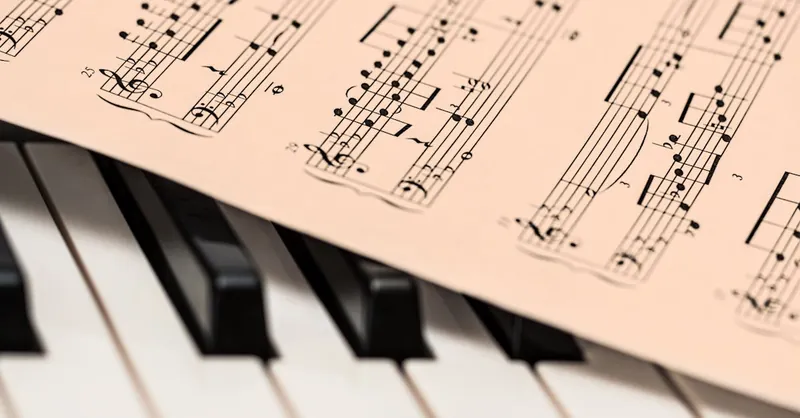
Image courtesy of Pixabay
Introduction to Scales: Major and Minor Scales on Piano
Scales are fundamental to piano music theory because they form the backbone of melodies, harmonies, and improvisation. Understanding how to build and play major and minor scales is essential for beginners to develop a strong musical foundation. Scales are simply ordered sequences of notes arranged by pitch, following specific patterns of intervals. Learning these scales on piano not only improves finger technique but also deepens your grasp of key signatures, chord construction, and overall musical structure.
Building the Major Scale on Piano
The major scale is characterized by its bright, happy sound and follows a consistent pattern of whole steps (two semitones) and half steps (one semitone). Starting from any note, the major scale is built using this formula of intervals:
Whole - Whole - Half - Whole - Whole - Whole - Half
For example, to play a C major scale, start on C and play the following notes:
C - D - E - F - G - A - B - C
- Between C and D: whole step
- Between D and E: whole step
- Between E and F: half step
- Between F and G: whole step
- Between G and A: whole step
- Between A and B: whole step
- Between B and C: half step
Mastering the major scale shape on the piano helps you understand key signatures and prepares your fingers for playing melodies and chords in a wide variety of songs.
Exploring the Minor Scale and Its Emotional Tone
The minor scale contrasts with the major scale by producing a more somber or melancholic sound, which is prevalent in many musical styles. The most common form is the natural minor scale, built with this pattern of intervals:
Whole - Half - Whole - Whole - Half - Whole - Whole
For example, the A natural minor scale consists of the notes:
A - B - C - D - E - F - G - A
The difference in intervals compared to the major scale defines its unique sound and mood. Learning to play the natural minor scale allows beginners to:
- Understand the emotional variety music can convey.
- Recognize relative minor scales that share notes with their major counterparts (e.g., C major and A minor).
- Apply their knowledge in improvisation, composition, and sight-reading minor key pieces.
Why Major and Minor Scales Are Vital in Music Theory
Both major and minor scales are crucial because they serve as the framework for:
- Constructing chords: Every chord is formed from specific notes within a scale.
- Understanding key signatures: Scales define the tonal center of a piece.
- Improvising and composing: Scales give you a palette of notes to create melodies.
- Improving finger dexterity: Practicing scales develops consistent hand movements and coordination.
For beginner pianists, dedicating time to learn and practice major and minor scales unlocks greater confidence in playing, enhances musical ear training, and provides deeper insight into the underlying theory of most piano music. By internalizing these scales, you begin to see the piano as a versatile instrument capable of expressive creativity grounded in solid theoretical knowledge.
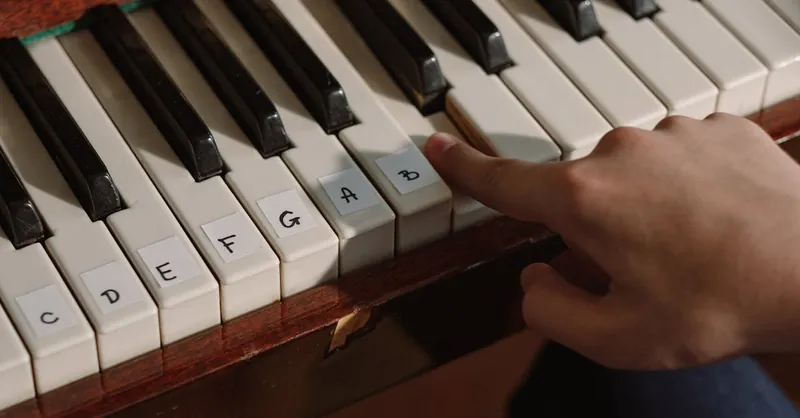
Image courtesy of cottonbro studio
Chords and Triads: Foundations of Harmony
Understanding chords and triads is a crucial next step in your piano music theory journey. Chords are groups of notes played together that create harmony, and triads — the simplest types of chords — consist of three notes. Learning how to construct and recognize these on the piano will unlock your ability to accompany melodies, compose your own music, and deepen your overall musical understanding.
What Are Triads and How Are They Constructed?
A triad is formed by stacking three notes in intervals of thirds on top of each other. On the piano, this means playing three keys simultaneously, where each note is a specific distance from the next:
- Root note: The starting note and the name of the triad.
- Third: The note either a major or minor third interval above the root.
- Fifth: The note a perfect fifth interval above the root.
For example, a C major triad consists of:
- Root: C
- Major third: E (4 semitones above C)
- Perfect fifth: G (7 semitones above C)
This structure creates the bright and stable sound typical of major chords.
Types of Basic Triads on Piano
The two most common triads beginners should focus on are:
- Major triads: Have a major third and perfect fifth above the root, creating a happy, bright sound.
- Minor triads: Have a minor third (3 semitones) and perfect fifth, producing a sadder or more melancholic tone.
Examples of these triads on piano:
| Triad Type | Interval Pattern from Root | Example (Root: C) | Sound Quality |
|---|---|---|---|
| Major triad | Root - major 3rd - perfect 5th | C - E - G | Bright, happy |
| Minor triad | Root - minor 3rd - perfect 5th | C - E♭ - G | Sad, somber |
How to Recognize and Play Chords on Piano
To identify chords on piano:
- Look for groups of 3 or more notes played simultaneously.
- Determine the root note (lowest note or the tonal center).
- Count the intervals between notes to classify the chord type (major, minor, diminished, etc.).
- Practice playing triads in different keys to familiarize yourself with their shapes and sounds.
Recognizing triads is also vital for reading and understanding chord symbols in sheet music or lead sheets, enabling you to quickly build accompaniment patterns and harmonize melodies.
Why Triads Matter in Piano Music Theory
Triads serve as the building blocks of harmony. They form the foundation for more complex chords and progressions and shape the emotional character of a piece. Mastering triads and basic chords equips beginner pianists with:
- The ability to accompany songs using chord progressions.
- A deeper understanding of musical harmony and voice leading.
- Enhanced skills in improvisation and composition.
- Increased confidence reading chord charts and sheet music.
By internalizing triads and their construction patterns, you build a powerful toolkit that connects piano theory with practical playing, enriching both your technique and creative expression.

Image courtesy of Pixabay
Rhythm and Timing Essentials for Beginners
Mastering rhythm and timing is crucial for beginner piano players, as it lays the foundation for playing music that sounds cohesive and expressive. Understanding how note values, rests, and common rhythmic patterns work helps you develop a solid internal pulse—and this skill is indispensable for both solo playing and ensemble performance.
Note Values: Understanding the Duration of Sounds
In music theory, note values indicate how long a note should be held. The most common note values you'll encounter include:
- Whole note (4 beats): A note held for an entire measure in 4/4 time.
- Half note (2 beats): Half the duration of a whole note.
- Quarter note (1 beat): The basic beat unit in many styles of music.
- Eighth note (½ beat): Twice as fast as a quarter note; often grouped in pairs.
- Sixteenth note (¼ beat): Four times as fast as a quarter note.
Recognizing these note lengths visually on sheet music and understanding their timing on the piano allows you to play passages with accurate rhythmic precision.
The Role of Rests in Rhythm
Just as important as the notes you play are the rests, which represent silence for specific durations. Rests use the same time values as notes and help to create rhythmic variety and phrasing. Key rests to know:
- Whole rest (4 beats): Silence for a full measure.
- Half rest (2 beats)
- Quarter rest (1 beat)
- Eighth rest (½ beat)
- Sixteenth rest (¼ beat)
Mastering rest values trains you to leave space in your playing and contributes to clean, articulate performances.
Common Rhythmic Patterns to Practice
Familiarizing yourself with basic rhythm patterns builds timing accuracy and groove on the piano. Some beginner-friendly rhythms include:
- Straight quarter notes: Playing notes evenly on the beat.
- Eighth-note pairs: Alternating playing and silent or accented notes for movement.
- Syncopation: Emphasizing off-beats to create interest—an essential rhythm for jazz and contemporary music.
- Triplets: Dividing a beat into three equal parts, adding rhythmic complexity.
Practicing these rhythms with a metronome or backing track will enhance your ability to keep steady time, which is one of the most valuable skills for any pianist.
Why Developing Timing Skills Matters
Strong rhythm and timing ensure your piano playing feels natural and in sync with other musicians or recordings. It enables you to:
- Interpret sheet music accurately, respecting note durations and tempo.
- Play smoothly across chord progressions and melodic lines.
- Improve coordination between both hands, especially when they perform different rhythmic patterns.
- Develop musical phrasing and expression, making your playing more dynamic and engaging.
By integrating note values, rests, and rhythmic patterns into your daily piano practice, you build the essential timing skills that make your music both precise and expressive. These fundamentals bridge theory and practical playing, empowering beginners to progress confidently toward more complex pieces and styles.
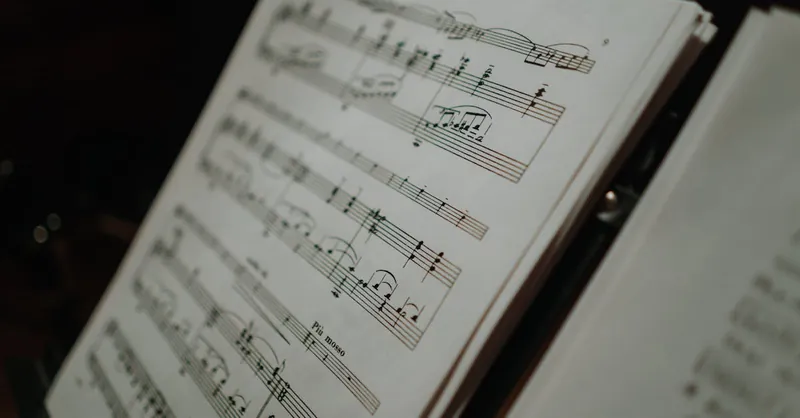
Image courtesy of cottonbro studio
Reading Sheet Music for Piano Beginners
One of the most essential skills for any piano beginner is learning how to read sheet music. Sheet music serves as the universal language of music notation, allowing you to translate written notes into piano sounds accurately. Understanding the basics, such as the staff, clefs, and note reading, will give you the confidence to interpret and play piano pieces straight from the page.
The Musical Staff: Your Starting Point
Sheet music is written on a staff, which consists of five horizontal lines and four spaces. Each line and space represents a different musical pitch or note. The position of a note on the staff determines which key to play on the piano.
- Lines and spaces alternate: the bottom line has a unique note, then the space above it another, continuing upwards.
- The staff provides a visual guide to pitch, moving from lower notes at the bottom to higher notes at the top.
Clefs: The Piano’s Two Voices
In piano music, two clefs define the range of notes for each hand:
- Treble Clef (G Clef):
- Positioned on the top staff line, it wraps around the second line from the bottom, which represents the note G.
-
Typically used for the right hand in piano music, playing higher-pitched notes.
-
Bass Clef (F Clef):
- Found on the bottom staff, it dots the fourth line from the bottom, indicating the note F.
- Usually associated with the left hand, covering lower-pitched notes.
By identifying which clef you are reading, you know exactly which section of the piano keyboard your notes correspond to.
Reading Notes for the Piano
Each note on the staff corresponds to a specific piano key. Beginners should memorize note names line by line and space by space for both clefs:
| Clef | Lines (Bottom to Top) | Spaces (Bottom to Top) |
|---|---|---|
| Treble Clef | E - G - B - D - F | F - A - C - E |
| Bass Clef | G - B - D - F - A | A - C - E - G |
Some helpful tips:
- Use mnemonic devices to remember the notes, e.g., for the treble clef lines: Every Good Boy Does Fine, and spaces: FACE.
- Start by identifying middle C, the bridge between treble and bass clefs, located roughly near the center of the piano keyboard.
- Practice sight-reading simple exercises by matching notes on the staff to the piano keys, improving your fluency progressively.
Why Reading Sheet Music Is Crucial for Beginners
Learning to read sheet music opens the door to a vast world of piano repertoire and deepens your understanding of musical structures, rhythms, and dynamics. It enables you to:
- Perform pieces accurately as the composer intended.
- Learn new songs faster without relying solely on memory or listening.
- Develop hand-eye coordination by associating written notes with keyboard positions.
- Gain independence in your piano study, making it easier to explore different musical styles.
Mastering this skill early builds a strong foundation for all other music theory concepts and practical piano techniques, empowering beginner pianists to advance with confidence and clarity.
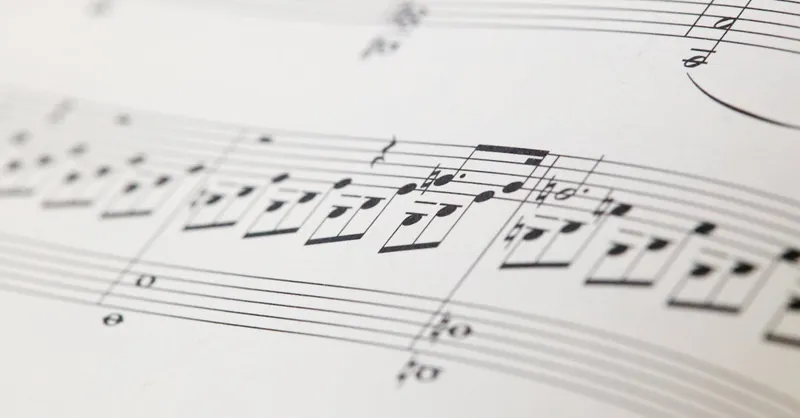
Image courtesy of César Guillotel
Connecting Theory with Practice: Simple Piano Exercises
Understanding music theory concepts is empowering, but the real magic happens when you apply this knowledge directly to the piano. To cement your learning and develop finger dexterity, it’s essential to engage in simple piano exercises that combine theory with hands-on practice. These exercises help you internalize scales, intervals, chords, and rhythms by playing them, making abstract ideas tangible and memorable.
Practice Ideas to Link Theory and Piano Playing
-
Play Major and Minor Scales Slowly
Start with the C major and A minor scales to reinforce your understanding of scale patterns and finger positioning. Play each note deliberately, focusing on smooth transitions between fingers and precise rhythm. This exercise advances both your theoretical knowledge of scales and your technical skill. -
Explore Intervals by Ear and on the Keyboard
Choose a root note, such as C, and play it together with its intervals—major third, perfect fifth, minor third, etc. Listen carefully to how each interval sounds and try identifying them by ear. This strengthens your interval recognition and links the distance between keys to sound quality. -
Build and Play Triads in Different Keys
Practice constructing major and minor triads from various root notes around the keyboard. For example, play a C major chord (C-E-G), then move to G major (G-B-D). Experiment with playing these chords in different inversions (rearranged order of notes) to understand their shapes and harmonies better. -
Combine Chords with Rhythmic Patterns
Use simple rhythms like quarter notes or eighth notes to strum through chords, mimicking basic accompaniment patterns. This exercise connects your knowledge of chords and rhythm, improving your timing and hand coordination. -
Sight-Read Simple Melodies While Naming Notes
Use beginner sheet music or flashcards and practice reading notes aloud as you play them on the piano. This reinforces your sheet music literacy and strengthens the link between written notes, finger movements, and sound.
By regularly incorporating these theory-integrated piano exercises, you accelerate the transition from conceptual learning to confident, expressive playing. This practical approach is ideal for beginners, as it makes theory accessible, enjoyable, and directly relevant to your piano journey.

Image courtesy of Pavel Danilyuk
Common Mistakes and Tips for Learning Piano Music Theory Faster
When starting out with piano music theory, many beginners encounter common pitfalls that can slow down progress and cause frustration. Recognizing these mistakes and knowing how to overcome them can accelerate your learning and make your practice sessions more effective and enjoyable.
Common Beginner Mistakes
- Trying to Learn Too Much at Once
It’s easy to feel overwhelmed by the vastness of music theory—notes, scales, chords, rhythm, and notation all at once. Scattering your focus can make concepts harder to retain. - Neglecting Practical Application
Learning theory without connecting it to the piano keyboard leads to abstract knowledge that’s hard to apply. Many beginners study theory mentally but forget to practice it hands-on. - Skipping Basics in a Rush
Some players jump to complex pieces or advanced theory before fully grasping fundamentals like the keyboard layout, intervals, or simple scales. This often results in repeated confusion and stagnation. - Ignoring Rhythm and Timing
Concentrating only on notes and chords but overlooking rhythm leads to mechanical and unmusical playing. Timing is equally essential for expressive and accurate piano performance. - Relying Solely on Memorization
Memorizing scales, chords, or note names without understanding their relationships limits your ability to improvise or recognize patterns in new music.
Effective Strategies to Learn Piano Music Theory Faster
- Break Theory into Manageable Chunks
Focus on mastering one concept at a time, such as intervals or a single scale, before moving to the next. This step-by-step approach builds confidence and reinforces retention. - Combine Theory with Hands-On Practice
Always link new theory concepts directly to the keyboard. For example, after learning about triads, spend time building and playing these chords in multiple keys. - Use Visualization and Mnemonics
Tools like note-name mnemonics for clefs or visualizing intervals and chord shapes on the piano can deepen your understanding and speed up recall. - Practice with a Metronome
Incorporate rhythm exercises using a metronome to develop precise timing. This improves coordination and musicality simultaneously with theory learning. - Engage Regularly with Simple Sheet Music
Sight-reading easy piano pieces that highlight your current theory knowledge reinforces learning naturally and boosts your confidence. - Review and Repeat Consistently
Repetition is key—regularly revisit previously learned theory concepts and exercises to solidify your foundation.
By being mindful of these common mistakes and applying these practical strategies, you’ll make your piano music theory journey smoother and faster. Integrating theory seamlessly with your piano practice ensures that your knowledge transforms into meaningful skills, empowering you to learn new songs, improvise, and enjoy playing with greater ease and creativity.
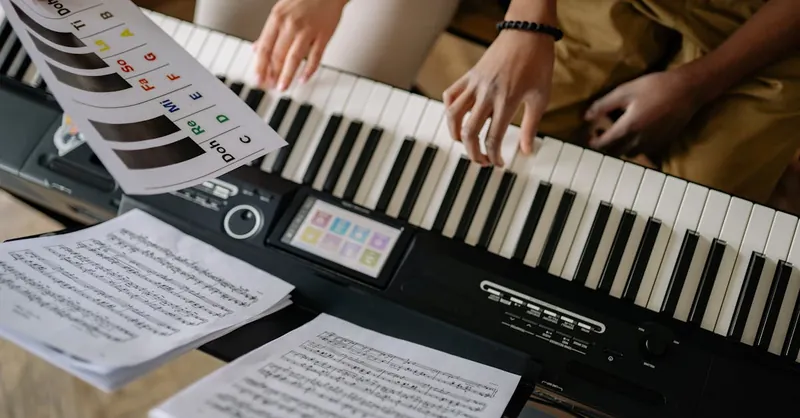
Image courtesy of Yan Krukau
Resources and Tools to Continue Your Music Theory Journey
As you progress in your piano music theory studies, leveraging the right resources and tools can dramatically enhance your learning experience and deepen your understanding. Whether you prefer interactive apps, comprehensive books, or engaging websites, these carefully selected options offer clear, beginner-friendly approaches to advance your knowledge effectively.
Recommended Books for Piano Music Theory Beginners
-
"Music Theory for Piano Students" by Michael Aaron
A well-structured series, perfect for beginners, that breaks down theory concepts with piano-focused exercises and explanations. -
"Alfred's Essentials of Music Theory" by Andrew Surmani, Karen Farnum Surmani, and Morton Manus
This book offers concise lessons paired with practical activities to solidify your grasp of scales, chords, and rhythmic patterns. -
"The Complete Book of Scales, Chords, Arpeggios & Cadences: Includes All the Major, Minor & Exotic Scales" by Willard A. Palmer
Ideal for learners looking to deepen their scale and chord vocabulary with piano-specific fingering diagrams and theory insights.
Top Apps to Reinforce Piano Music Theory
-
Tenuto
A highly customizable app focused on note recognition, intervals, chords, and rhythm exercises that build foundational skills in an interactive way. -
Simply Piano by JoyTunes
Perfect for beginners, this app combines real-time piano playing with theory lessons to ensure you understand the concepts as you play. -
Perfect Piano
A virtual keyboard app with built-in lessons on scales, chords, and theory quizzes, enabling practice anywhere with instant feedback.
Essential Websites for Expanding Theory Knowledge
-
musictheory.net
Offers free tutorials, exercises, and tools designed for beginners to intermediate learners. Their interactive lessons on reading music and chord construction align well with piano study. -
Pianoscales.org
Focuses exclusively on piano scales and chords, providing clear diagrams and explanations that help connect theory concepts directly to the keyboard. -
Teoria.com
An extensive resource for learning theory concepts such as intervals, chords, and rhythm with interactive exercises tailored for practical application.
Why Use These Resources?
Incorporating books, apps, and websites into your piano theory practice lets you:
- Reinforce concepts through multiple learning modes: reading, listening, writing, and hands-on playing.
- Track your progress with structured lessons and interactive quizzes.
- Access immediate feedback, which is crucial for correcting mistakes early.
- Stay motivated by varying your study routine with engaging, bite-sized learning modules.
By combining these well-regarded resources with your regular piano practice, you ensure a continuous, immersive, and efficient music theory education. This multi-faceted approach empowers beginners to build strong piano skills that are rooted in clear theoretical understanding—making your music journey both enjoyable and effective.

Image courtesy of cottonbro studio
